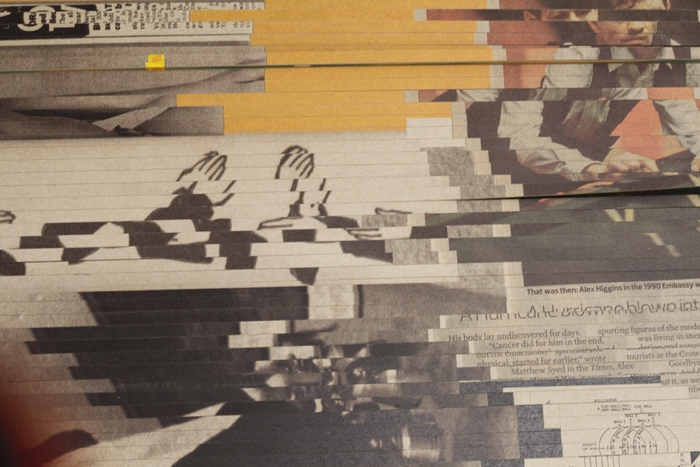ArtReview sent a questionnaire to artists and curators exhibiting in and curating the various national pavilions of the 2019 Venice Biennale, the responses to which will be published daily in the lead-up to the Venice Biennale opening on 11 May.
Sean Edwards is representing Wales. The pavilion is part of the Biennale’s programme of collateral events and is located at Santa Maria Ausiliatrice, Castello, 450 (Fondamenta San Gioachin)
What can you tell us about your exhibition plans for Venice?
I’m presenting a new body of work – sculptures, a film, prints, textiles (specifically Welsh quilts) and a short live radio play. This suite of works has a relationship to my own history – drawing on my experience of growing up working class on a council estate – but also responds to the history and architecture of the Church of Santa Maria Ausiliatrice, former convent and now active school and community centre. The radioplay Refrain is a key work and is broadcast live every day, throughout the entire Biennale. It’s performed by my mother from her council flat in Cardiff and takes place at 2pm, so that would be a good time to visit.
What does it mean to ‘represent’ your country? Do you find it an honour or is it problematic?
It’s a huge honour of course. I’m extremely proud to based here in Wales, working away from the perceived centre of the UK. And so naturally it’s an honour to be selected to ‘represent’ this country, but of course it also means you know that you don’t speak for everyone; that’s the problematic side too. I just know that I have to make the most honest show possible with my voice, but one that attempts to connect with wider concerns.
Is your work transnational or rooted in the local?
Both. The themes I’m aiming to take on for this exhibition – austerity, class, shame, loss, what it means to live in a constant state of ‘not expecting much’ – speak across borders. But to deal with these things in an intimate way – I’m interested in the small details that tell a bigger story – I need to start with the local. With this body of work I’ve started as locally as I can, by drawing upon my own family’s story and hopefully through the process of making the work the ideas can connect more widely. That’s the aspiration.
How does having a pavilion in Venice make a difference to the art scene in your home country?
Wales, like Scotland, makes an official presentation as a Collateral Event of the Biennale – I think I get into trouble if I say ‘pavilion’! But yes of course it does. As an emerging artist when I returned after studying away it was hugely important for me seeing Wales taking part on the international art stage, and I’d hope that this still holds true for the fantastic young artists who have chosen to stay and practice in Wales.
The idea is that an artist presenting at Venice to a global audience draws more attention onto work made in Wales and within the UK outside of London. I’d say generally that a lot more has to be done in this regard, in shifting ideas of the ‘centre’ and who is at the centre. You’d be amazed how often I hear people from London who have eventually made the trip to Cardiff saying “It was only 2 hours”. Just make that trip.
If you’ve been to the biennale before, what’s your earliest or best memory from Venice?
My earliest memory was not from the Biennale itself but as a young art student listening to Bethan Huws present the working draft of a script that became her film Ion On, for the 2003 Wales in Venice. That’s when I first heard about the Biennale and that entire evening listening to Huws was a pivotal moment for me and my work. Best memory of Venice itself would probably have to be seeing the success Bedwyr Williams had with his Starry Messenger exhibition in 2013. I don’t follow sport, but I can imagine the pride that Wales’s visual arts community had that year was akin to the Grand Slam win. And Cate Le Bon performing that night at the party was just magical.
You’ll no doubt be very busy, but what else are you looking forward to seeing?
Charlotte Prodger & Cathy Wilkes of course. Jesse Darling in Ralph Rugoff’s curated show and – one of the drawbacks of living off centre – I missed the Martin Puryear show at Parasol Unit in 2017 so very much looking forward to seeing his work in the US Pavilion.
The Venice Biennale runs 11 May – 24 November
